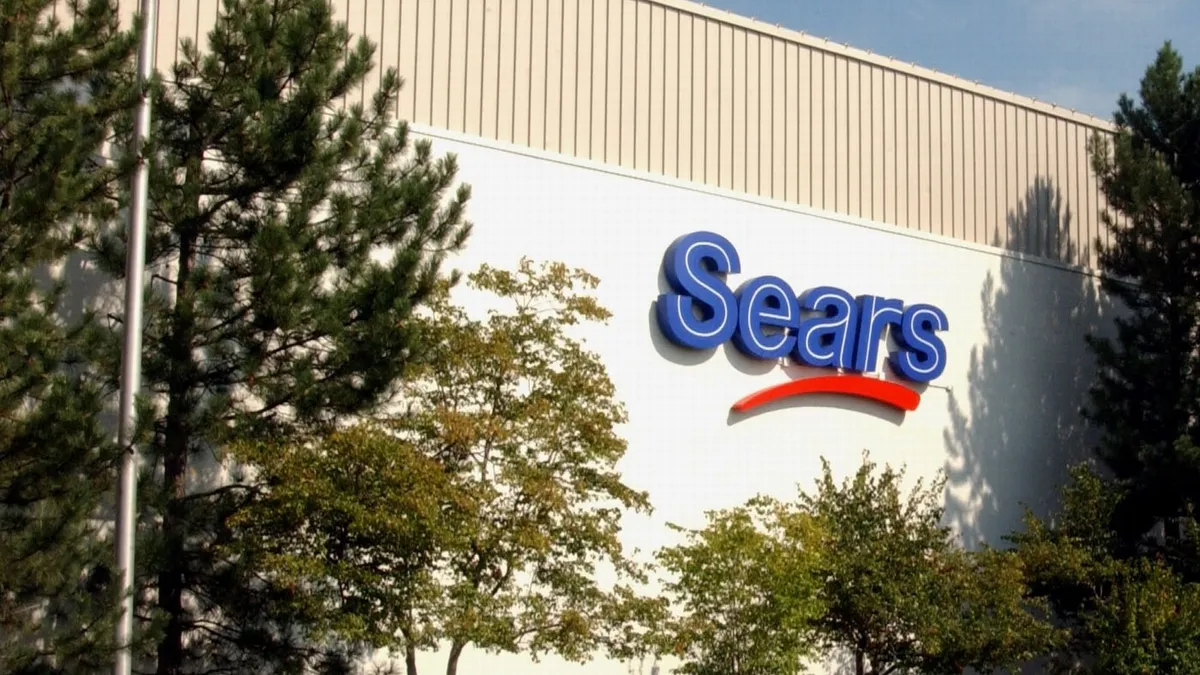Editor's note: This story has been updated to include a comment from Sears' Chief Digital Officer emailed to Retail Dive.
Dive Brief:
- Sears has expanded its product leasing business to its namesake and Kmart websites, allowing customers to make purchases online of at least $200 in monthly, weekly or bi-weekly installments, according to a company blog post.
- Sears' leasing program, first launched in stores in 2012 with financing company WhyNotLeaseIt, resembles the rent-to-own model. Customers can have products shipped to them immediately, rather than paying in installments before acquiring the product, as through a layaway program. Leena Munjal, Sears' chief digital officer, said in the post that Sears has processed 1 million leases since launching the option six years ago.
- Leasing at Sears requires no credit or reference checks for customers. Some standard lease options available can add 45% to the ticket price of an item, or potentially more than 200%, according to Retail Dive's review of Sears' lease program.
Dive Insight:
Sears' leasing expansion to its online platforms will almost certainly give the program broader reach. Munjal said that the move made Sears "the only national full service retailer to offer a full assortment of products to lease both online and in-store" and added that customers could tack on services like installation into their leases.
The expansion of leasing could pose some financial risks for Sears, as it ships merchandise with little upfront payment to customers with potentially poor or no credit histories. But, as with other retailers who opt into the leasing model, the steep premiums added to prices on leased products hold the potential for high profits.
On a $1,000 lease, for example, consumers could make an early purchase in 30 days, bringing the full cost to $1,050 (a 5% premium over the ticket price). However, on a five month lease (the minimum term), customers who have paid five $180 monthly payments, and who choose to buyout the lease for an additional $550, end up buying the item for $1,450, or 45% above the ticket price, according to Sears' lease calculator.
At five months, customers could also opt to return the item entirely or continue making monthly payments up to 18 months, the maximum lease length, according to a Sears spokesperson. At that point, a customer making monthly installments on a $1,000 lease would have paid $3,240 — more than three times the original ticket price (and a 224% premium).
A Sears spokesperson confirmed Retail Dive's estimates, but said in an email that only "a small fraction of customers" who use the lease path to ownership do so on 18-month terms, and the average leasing customer buys out his or her contract at seven months.
"Our priority always has been to put our members first. We want to make it easy for our members to get access to products and services they need for their home and family," Leena Munjal, chief digital officer told Retail Dive in an emailed statement. "Our members tell us that having the option to finance their purchase – especially for big ticket items – is important. Different members have different financial circumstances, and for that reason, we have continued to introduce new and flexible payment options over the years."
"Sears and Kmart’s leasing program was specifically designed to give a much-needed financial solution to those unable to purchase on credit, secure credit, or because of immediate need, are not able to use layaway," she said. "Our results tell us this offering has resonated with a specific member segment and they appreciate having an option that makes it possible for them to get products they need, even if they cannot secure credit."
The leasing and rent-to-own models have a mixed history of performance and have been sharply criticized by consumer advocates for gouging lower income customers who can't get favorable credit terms or save for big-ticket items.
When Sears first launched its leasing program, the Consumerist blog quickly panned the move: "The rent-to-own business is an extremely profitable one: Who wouldn't want to collect more than three times the list price of, say, a computer? So it's interesting but not surprising that troubled retailer Sears is now entering the lease-to-own market in a partnership with [WhyNotLeaseIt]."
The experience of Rent-A-Center may be instructive. The rent-to-own retailer's run has been turbulent of late, with executive turnover and activist investors agitating for the company to sell itself. One of those activists, Glenn Welling of Engaged Capital, noted in a 2016 letter to Rent-A-Center's management, that rent-to-own outlets straddle the line between consumer finance and retail. Rent-A-Center's "Achilles' heel" in the markets, Welling said, was public perception of the company as a "predatory lender" that "[takes] advantage of a financially challenged customer by locking them into expensive obligations which perpetuates a 'cycle-of-debt.'"
Sears might be able to boost sales and profits through an expansion of its leasing problem, but the ailing retailer — the subject of near-constant bankruptcy speculation — also risks further hurting its public image.













